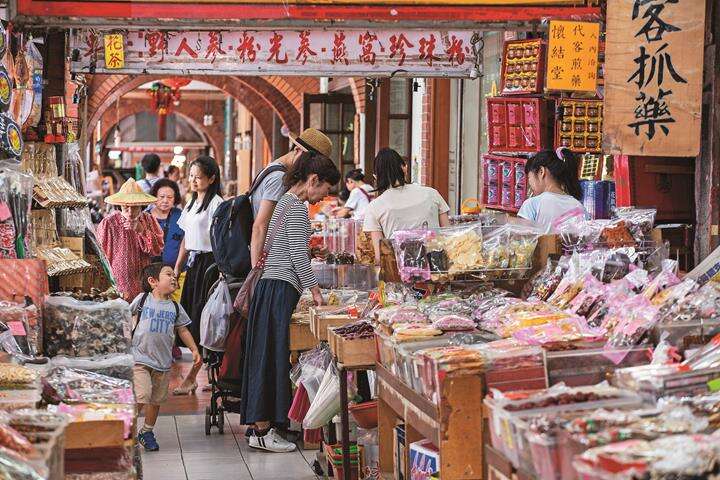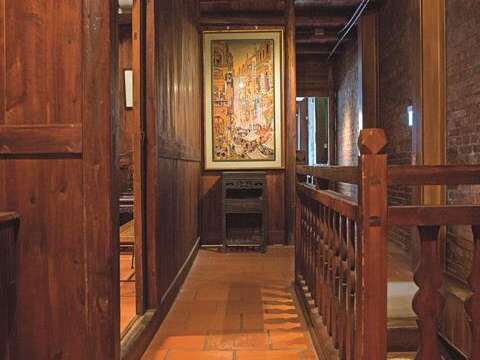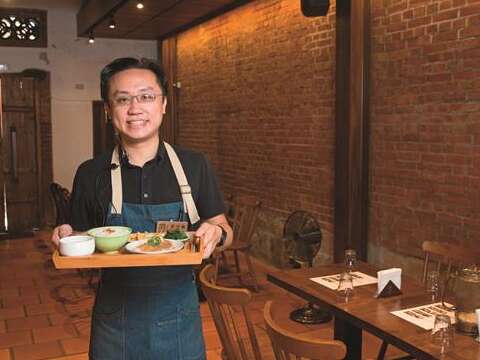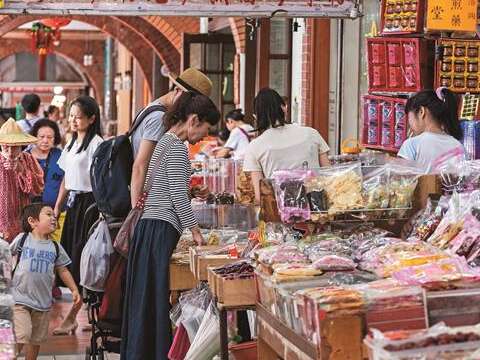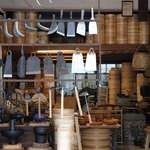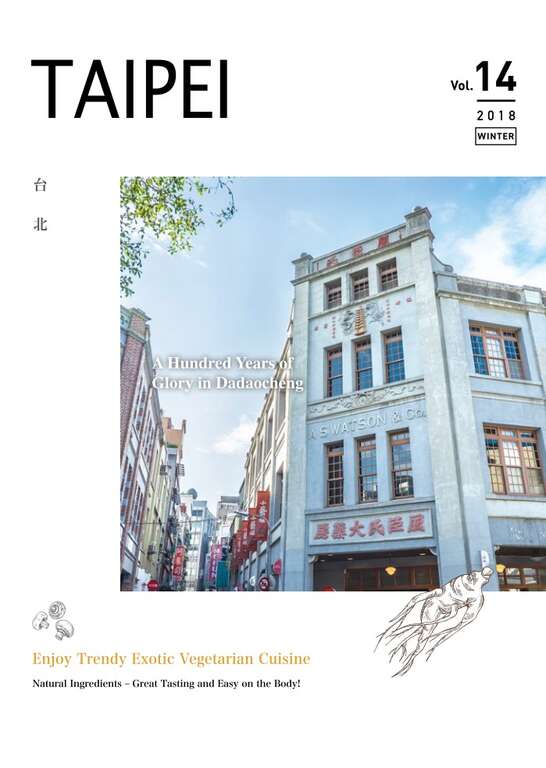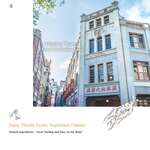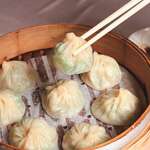Post date:2018-12-11
1253
Witnesses to History: the Rice and Grocery Industries –
Finding New Expressions of the Spirit of Ancestors
Article: Chen Wanyu
Photos: Wang Hanshun, Lin Weikai
Walking along Dihua Street’s middle north section between Minsheng West Road and Guisui Street (歸綏街), one sees grocery stores everywhere. They stock all kinds of dried foods, snacks and canned goods, and the smell of seafood lingers in the air. The busy rice mills of yesteryear are long gone from the north section between Guisui Street and Daqiaotou (大橋頭), and this neighborhood is now occupied by prosperous old stores and vibrant new cultural and creative businesses.
“Increase variety in your inventory, find new sources, and progress in faster, more innovative ways – you’ll soon find yourself owning a piece of the market.”
In the late Qing, most groceries were imported from mainland China. During the Japanese era, goods imported from Japan were tax-free, so you could find their dried salty fish and scallops among other items at these stores. In the 19th century, Taiwan opened its ports to foreign trade, and since Dadaocheng was located near one, it became the most important grocery wholesale market in northern Taiwan.
Grocery Trading is Like Dealing in the Stock Market
Linfuzhen (林復振商行), founded by one of Dadaocheng’s pioneers, Lin Youzao (林右藻) and his family, is one of the oldest stores in Taipei. Fifth-generation owner, Lin Zhaogang (林兆剛) remembers family elders saying that the Japanese era was a time of scarcity, and that prices fluctuated widely in Taiwan right after restoration from colonial rule. Grocers needed to pay attention to changes in market demand. As in the stock market, a trader needs to know when to buy and when to sell. But, if one has sharp eyes and makes the right moves, he or she can realize amazing profits!
From the 1960s to the 1980s, Dihua Street was the center of grocery wholesale in northern Taiwan. Be it domestic products, such as dried shrimp and mushrooms, or imported goods, such as ginseng and abalone, all were sold to individual customers, as well as resellers and restaurants, by Dihua Street wholesalers.
Lin recalls that when he was little, his aunts and other family elders were forever scooping dried shrimp into shopping bags. The business back then was several dozen times larger than it is now. People bought gifts for all kinds of occasions. Chinese New Year was an especially busy time, and stores needed to stock up a couple of months in advance. Over the New Year’s period, sales averaged more than one thousand gift boxes per day! And, although they had almost 20 staff working at the store, overtime was unavoidable. This is how good business was back then.
In the 1980s, convenience stores and hypermarkets appeared, and people changed their consuming habits. As a result, the wholesalers’ most loyal customers, the independent grocery stores, went out of business, and the wholesale business hit rock bottom.
Releasing New Products and Doing Retail on the Side
In the late 1990s, Lin took over his family’s business at a time when the middle section of Dihua Street was lifeless. Their store was an old one, but a few long-time customers still dropped by. Lin notes, “Our primary customers changed from wholesalers to resellers and retailers, and the volume of our business were reduced by ninety percent!”
Today, as a result, many grocery stores do both wholesale and retail business, and not only sell traditional grocery items, but also provide online shopping. Some business owners have even looked overseas with an eye to becoming agents for new product lines. Lin says, “One of the ways we can expand product lines in the future is to discover fine things from all over Taiwan and sell them. For example, Chenyuanho Soy Sauce (陳源和醬油) and Chushan’s (竹山) natural dried bamboo shoots used to be something only Yunlin (雲林) locals knew about, but now they’re exclusively sold at Linfuzhen.”
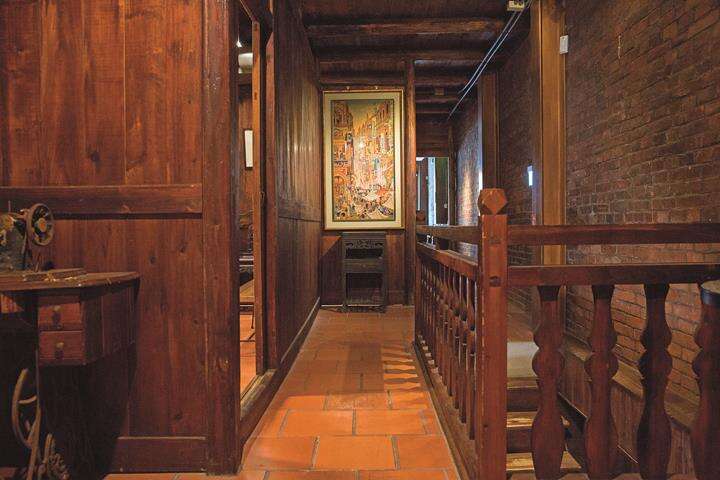
The Rise and Fall of Rice Over the Past Century
The grocery business along Dihua Street is still going strong, but once you pass Guisui Street and enter the north section, the booming rice business of one hundred years ago is just a memory.
One of the rice stores has been transformed into a restaurant: Rice & Shine (稻舍). The owner, Ye Shoulun (葉守倫), is a fifth-generation descendant of a local concern, Ye’s rice stores. This business bears witness to the rise and fall of rice in Dadaocheng.
Founded in 1923, Ye’s rice mill once did a booming trade. In 1969, it closed due to changes in agricultural and food policy and to the social environment. “At that time, mill owners usually owned the land too. They could set the price of rice themselves. Later, the government set up the Food Department and assumed control of rice prices. Moreover, the land reform policy went into effect and many rice stores couldn’t keep afloat. My grandfather was the last rice entrepreneur in the Ye family.” Ye Shoulun speaks with the voice of experience about the changes he’s witnessed and the rise and fall of the business. He says that in his grandfather’s time, there were 46 rice stores along the north section of Dihua Street, but now there’s only one left.
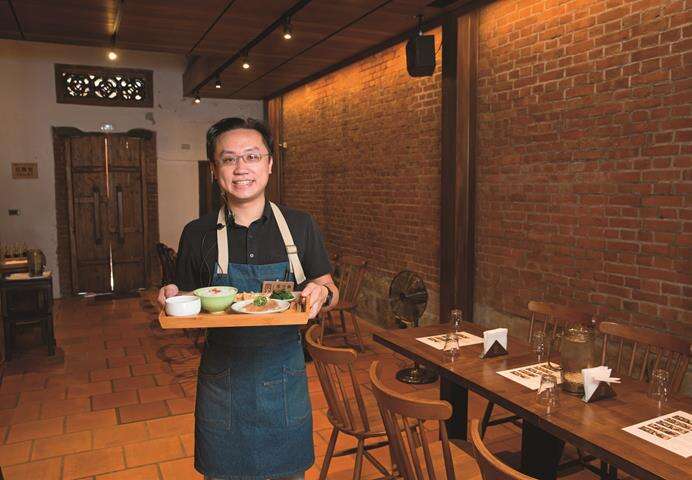
Old House Becomes a Restaurant and Exhibition Complex
Ye opened his shop at the old site in 2016, after it had been resting for about 50 years. He sells specialty rice from different parts of Taiwan and locally-processed produce. He’s joined the Taipei City Urban Regeneration Station project, and transformed his one-hundred-year old house into a cultural complex, which combines rice meals with exhibits.
“Pass on the spirit of the traditional rice trade, promote rice cuisine with delicious dishes, and revive the glory of the industry!”
“In the old days, my grandfather and others would go all over Taiwan to buy rice, and now I visit many places to find good strains, too. The rice cuisine in my restaurant promotes Taiwanese rice, and thus passes on the spirit of my ancestors.” Ye says that, by providing meals using local ingredients, holding speeches, giving advanced tours, and hosting classes and performances, he hopes to attract people into the old house, where they can enjoy some delectable warm rice.
Grocery stores in the middle section of Dihua Street have found a new positive energy and raised their competitive game. The old stores on the north section have revived the spirit of their industry, and put the traditional rice industry and the history of Dadaocheng back into people’s imaginations.
Gallery
Popular articles
 TAIPEI QUARTERLY 2018 WINTER Vol.14
TAIPEI QUARTERLY 2018 WINTER Vol.14 Taiwanese Tea Travels Overseas – Tea Family Descendants Regain their Glory (TAIPEI QUARTERLY 2018 WINTER Vol.14)
Taiwanese Tea Travels Overseas – Tea Family Descendants Regain their Glory (TAIPEI QUARTERLY 2018 WINTER Vol.14) Witnesses to History: the Rice and Grocery Industries – Finding New Expressions of the Spirit of Ancestors (TAIPEI QUARTERLY 2018 WINTER Vol.14)
Witnesses to History: the Rice and Grocery Industries – Finding New Expressions of the Spirit of Ancestors (TAIPEI QUARTERLY 2018 WINTER Vol.14) Fifty Suggestions for a Day in Dadaocheng (TAIPEI QUARTERLY 2018 WINTER Vol.14)
Fifty Suggestions for a Day in Dadaocheng (TAIPEI QUARTERLY 2018 WINTER Vol.14) Natural Ingredients – Great Tasting and Easy on the Body! (TAIPEI QUARTERLY 2018 WINTER Vol.14)
Natural Ingredients – Great Tasting and Easy on the Body! (TAIPEI QUARTERLY 2018 WINTER Vol.14) Creativity Brings Out Veggie Dish Richness (TAIPEI QUARTERLY 2018 WINTER Vol.14)
Creativity Brings Out Veggie Dish Richness (TAIPEI QUARTERLY 2018 WINTER Vol.14)
 Witnesses to History: the Rice and Grocery Industries – Finding New Expressions of the Spirit of Ancestors (TAIPEI QUARTERLY 2018 WINTER Vol.14)
Witnesses to History: the Rice and Grocery Industries – Finding New Expressions of the Spirit of Ancestors (TAIPEI QUARTERLY 2018 WINTER Vol.14)